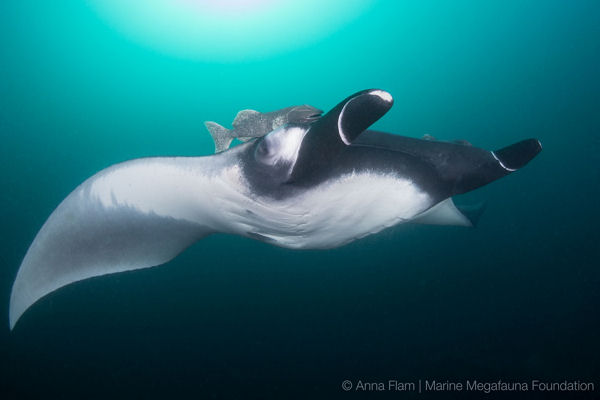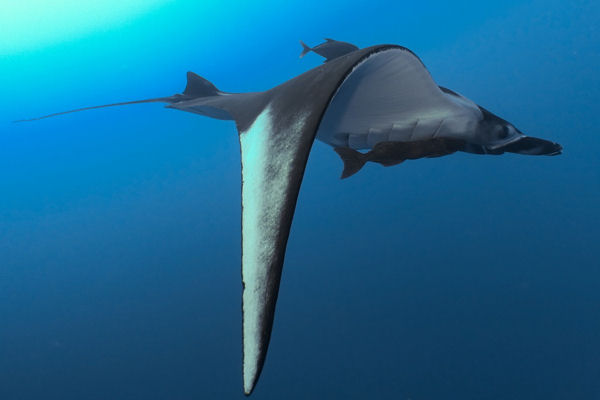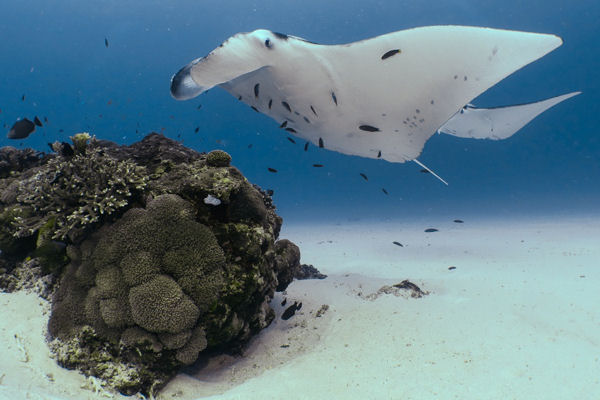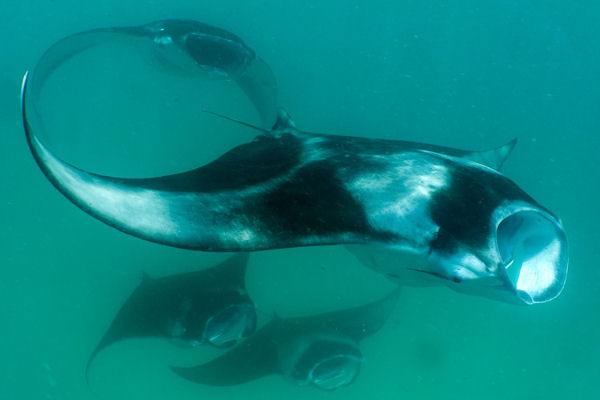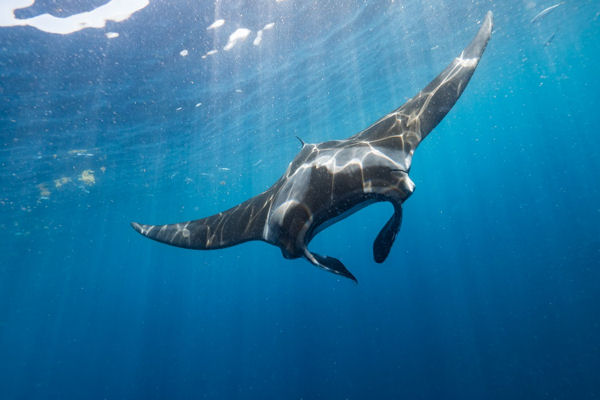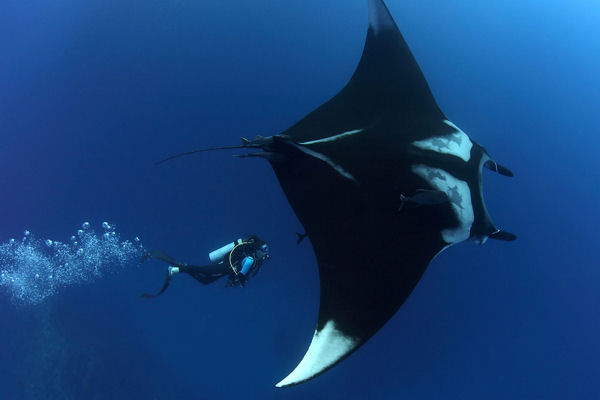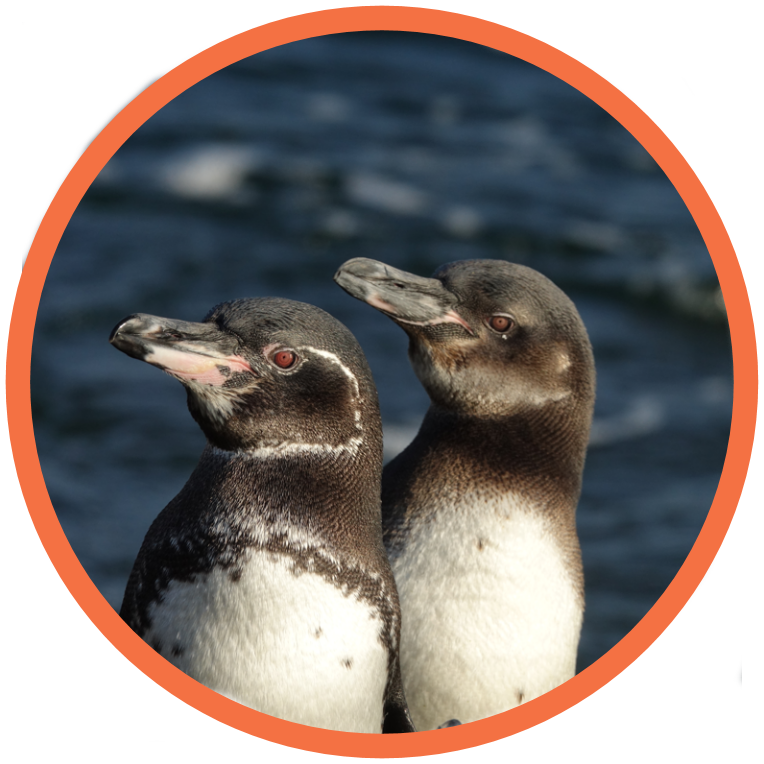IUCN Category:
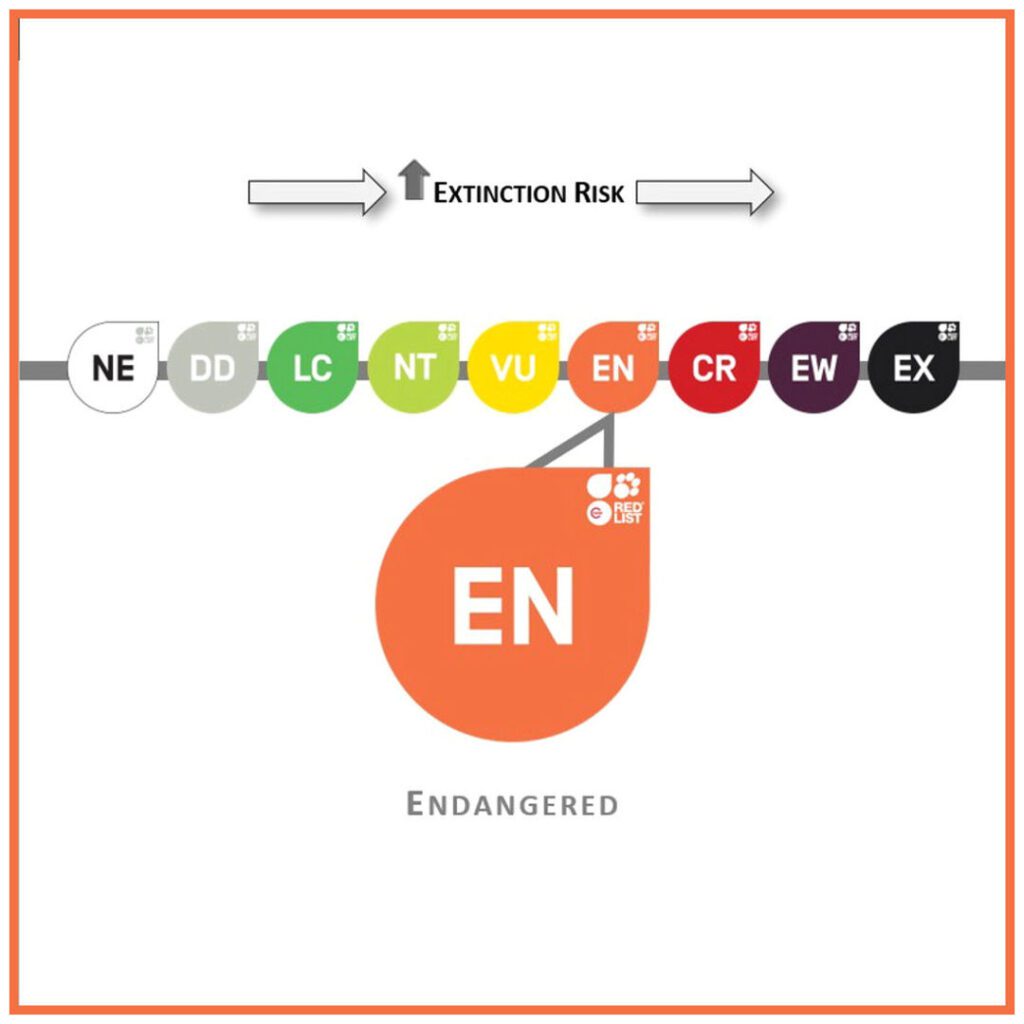
ENDANGERED
A2bcd+3d
Species Name (Common):
Oceanic Manta Ray
Species Name (Scientific):
Mobula birostris
Habitat Type:
Marine Neritic, Marine Oceanic
Geographic Range:
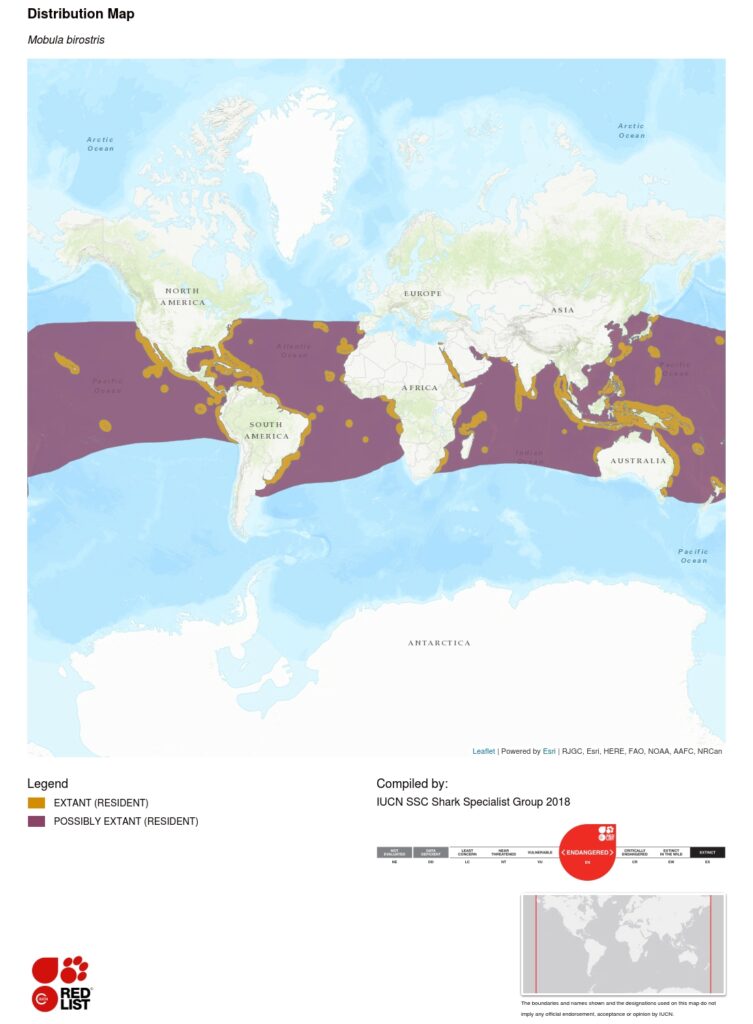
Range:
The Oceanic Manta Ray is circumglobal in tropical and temperate waters from the surface to 1,000 m depth (Last et al. 2016).
Estimated population of mature individuals:
unknown
Population Trend:
Decreasing
Primary Threats:
Humans – hunted for their gill plates, entangled in fishing nets, pollution from unregulated tourism/commerce, destruction/contamination of their food sources, climate change.
Conservation Efforts:
Conservation efforts include establishing marine protected areas (MPAs), enforcing fishing regulations, and reducing bycatch. International agreements like CITES regulate trade in manta parts. Research monitors populations, while ecotourism promotes awareness and supports local economies, incentivizing their protection.
The Oceanic Manta Ray, also known as the Giant Manta Ray, is one of the largest rays in the world.

soon …
Importance in Ecosystems
Ecosystem Engineers:
Oceanic manta rays play a crucial role in marine ecosystems as filter feeders, consuming large quantities of plankton and small fish. This feeding behaviour helps regulate plankton populations, which can influence nutrient cycling and the health of marine food webs. Additionally, their presence supports ecotourism, which promotes conservation and sustainable practices in local communities. They also contribute to the health of coral reefs and other habitats by helping maintain balanced ecosystems through their feeding and migratory patterns.
Here are some key characteristics:
Physical Description
Size and Weight:
The Oceanic manta rays are huge, with a wingspan that can reach up to 7 meters (23 feet) or more. They can weigh up to 3,000 kilograms (6,600 pounds).
Appearance:
They have a broad, flat, diamond-shaped body with triangular pectoral fins that give them their “wings.”
Their coloration is typically dark black or deep blue on the top side and white on the underside.
Each manta has a unique pattern of spots on its ventral surface (belly). This, like a human fingerprint, enables researchers to identify every individual manta and develop photo-ID databases. That is why you see so many photos of Manta Rays from the underneath.
Head and Mouth:
They have a large, wide mouth at the front of their body, and a pair of cephalic lobes (which look like horns or fins) near the mouth that help guide plankton into it.
They are filter feeders, primarily consuming tiny organisms like microscopic plankton, small fish, and crustaceans out of the water, straining and trapping this food in their gills, and then swallowing it.
They have five gill slits on each side.
Manta rays have the largest brain of all fish relative to their size, and they have a highly developed sensory system.
Behaviour and Social Structure:
Although the Giant Manta Ray tends to be solitary, they aggregate at cleaning sites and to feed and mate. Manta rays exhibit social behaviours such as playing together and searching for food.
They are known for their graceful, slow swimming style, gliding through the water with ease, although they often perform acrobatic breaches where they leap out of the water.
They are curious and social creatures, sometimes interacting with divers. These gentle giants are essential to marine ecosystems and are a favourite among ocean lovers for their grace and beauty.
Habitat:
They are found sparsely distributed in small, highly fragmented populations worldwide, in tropical, subtropical, and temperate waters and are commonly found offshore, in oceanic waters, and in productive coastal areas, typically in open ocean environments but also near coral reefs.
Lifespan
They have an estimated lifespan of around 40 to 50 years in the wild. However, they have slow reproductive rates, reaching sexual maturity between 8 to 15 years old, and typically give birth to one pup every 2 to 5 years. Their long lifespan and low reproduction rates make them vulnerable to population declines.
Other Endangered species that need your help …


